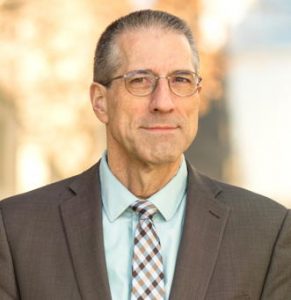IN REVIEW: German ensemble brings authenticity to Baroque masters
The Akademie für alte Musik Berlin performs Baroque music with a bright, solid sense of style, technique to spare and, where necessary, a sense of playfulness and mirth. Their performance on March 11th at the Folly Theater, part of the Friends of Chamber Music’s series, offered delights and, at times, frustrations but was ultimately a satisfying evening of Bach, Handel and Telemann. Established in 1982 in the former East Germany, this early-instrument group has studied the performance practice of the 18th century with great diligence—as demonstrated in its tasteful tempos and ornamentation and its intuitive grasp of articulation and of the mesa da voce or melodic “swells.” If at times balance issues made it difficult to hear the recorder and especially the flute, the virtuosity of these 15 players—and a strong sense of personality across the board—make this an ensemble to be reckoned with.
The group consists of six violins, two violas, cello, double bass, recorder, flute, bassoon, lute and harpsichord. They played Telemann’s Overture in F minor (TWV 55:F1) with panache, lending it just the right amount of spin but not overdoing it.
In the gentle Plainte movement one became quickly aware of the careful stylistic mastery of flutist Christoph Huntgeburth,though here as elsewhere it was hard to hear his small tone over the harpsichord. Balance continued to be an issue in Bach’s Fifth Brandenburg Concerto, where even Elfa Kristinsdottir’s solo violin was hard to hear, and Christoph’s flute was at times drowned out completely. Because a harpsichordist cannot, for the most part, adjust his or her volume, it becomes incumbent upon the other soloists to project accordingly. Still, this Fifth Concerto was a highlight of the evening because of Raphael Alpermann’s hair-raising harpsichord solos: The famous first-movement cadenza was as florid, fluid and sensitive as I have heard it.
Solo violinist Georg Kallweit played Bach’s E-major Violin Concerto proficiently despite some squeaks and pitch issues, especially in the Allegro. I liked the way the group reveled in the crunchy harmonies accompanying Georg’s plaintive Adagio, and the way that cellist Jan Freiheit came to life in the finale. Handel’s Concerto Grosso in F major (Op. 6, No. 2) featured antiphonal solo violins, which at times struggled to maintain precise ensemble. (Perhaps if they’d been nearer each other, instead of at opposites sides of the stage, this might have been somewhat ameliorated.) The loud martellato chords of the Largo movement were so whimsically aggressive as to draw chuckles from the audience.
The program closed with Telemann’s Concerto in E minor for Recorder and Flute (TWV 52:e1), a fascinating exploration of the subtle differences between the sonorities of these two instruments—one end-blown, the other top-blown as with the modern flute. Christoph and Anna Fusek were the sensitive soloists, and both did their best to project over the ensemble—Anna coming closest. The concerto’s finale was a quick, crowd-pleasing Polish dance, complete with tambourine and ratchet.
For tickets to upcoming Friends of Chamber Music concerts, including those by pianist Garrick Ohlsson on March 19th and Trio Mediaeval on March 26th, call 816-561-9999 or go to www.chambermusic.org.
To reach Paul Horsley, performing arts editor of The Independent, send email to phorsley@sbcglobal.net.
Features

By Paul Horsley David Ludwig knows better than to attach a “back-story” to a piece irrevocably, although he has openly stated that his new Violin Concerto was inspired by his…

By Paul Horsley Each production of The Nutcracker is to some extent a balancing act between spectacle and dance. At best it seamlessly integrates the colors and stagecraft that keep…

By Paul Horsley The Lyric Opera of Kansas City deserves applause for taking on an opera in Czech for the first time in its history, but the opening performance of…






